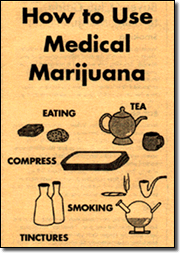As an alternative to vaporizing or combusting, cannabis may be ingested. However, to have as much effect, the cannabis or its extract must be sufficiently heated or dehydrated to cause decarboxylation of its most abundant cannabinoid, tetrahydrocannabinolic acid, into psychoactive THC.

Although hashish is sometimes eaten raw or mixed with water, THC and other cannabinoids are more efficiently absorbed into the bloodstream when combined with butter and other fats or alternatively dissolved in alcohol. The time to onset of effects depends largely on stomach content & personal metabolism, but is usually less than one hour, and may continue for a considerable length of time, whereas the effects of smoking herbal cannabis are almost immediate, lasting a shorter time. Start slow with ingestion of cannabis, as it takes time to feel the effects. Once you begin to feel the effects the process will continue to intensify until your body has processed all of the THC.
Ingesting cannabis can be more potent than vaporizing or combusting. Combusting cannabis results in a significant loss of THC and other cannabinoids in exhaled smoke, by decomposition in high-temperature burning and, with a joint or large-bowl utensil, in smoke that escapes and is not inhaled. In contrast, a temperature-controlled vaporizer can directly release more of the cannabinoids into the vapor, without burning the organic matter, while ingestion brings all of the active cannabinoid compounds into the body. It has been shown that the primary active component of cannabis, Δ9-THC, is converted to the more psychoactive 11-hydroxy-THC by the liver. Getting the exact desired effect by ingestion is more difficult than through inhalation, due to the long onset time for the effects.
Photo Credit: http://www.pressuredrop.com/Pot4Health/TakingIt/Images/Pamphlet-1.gif









